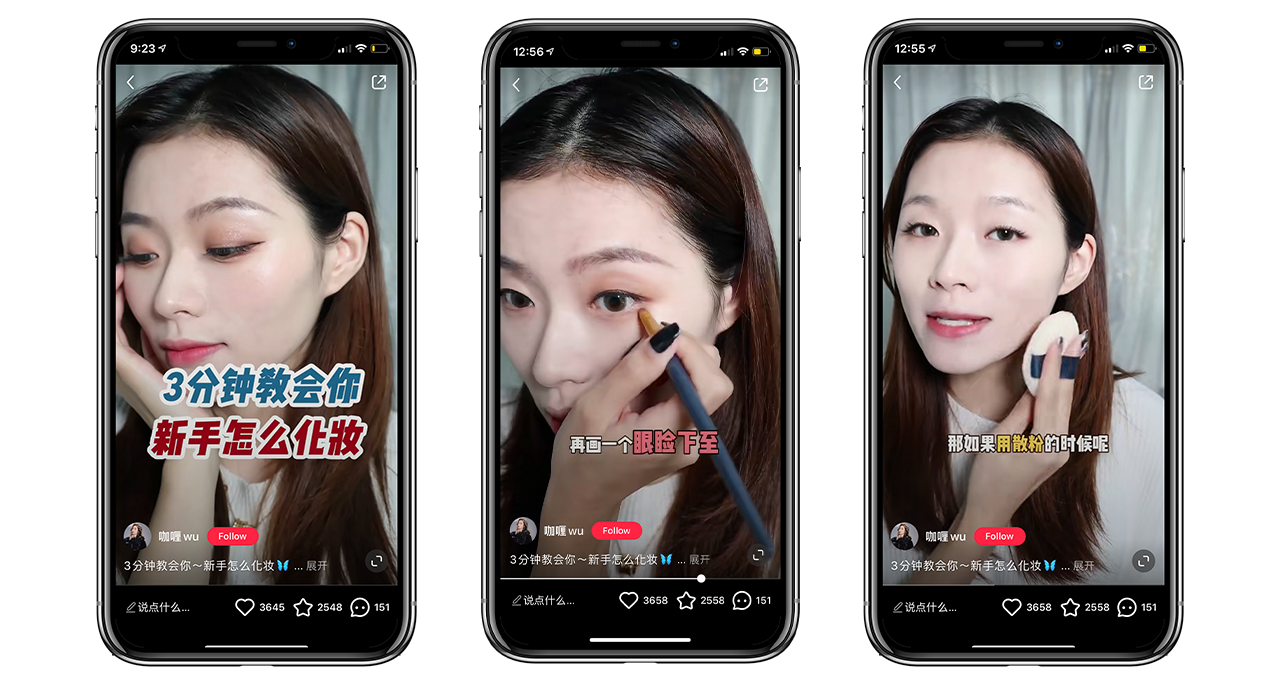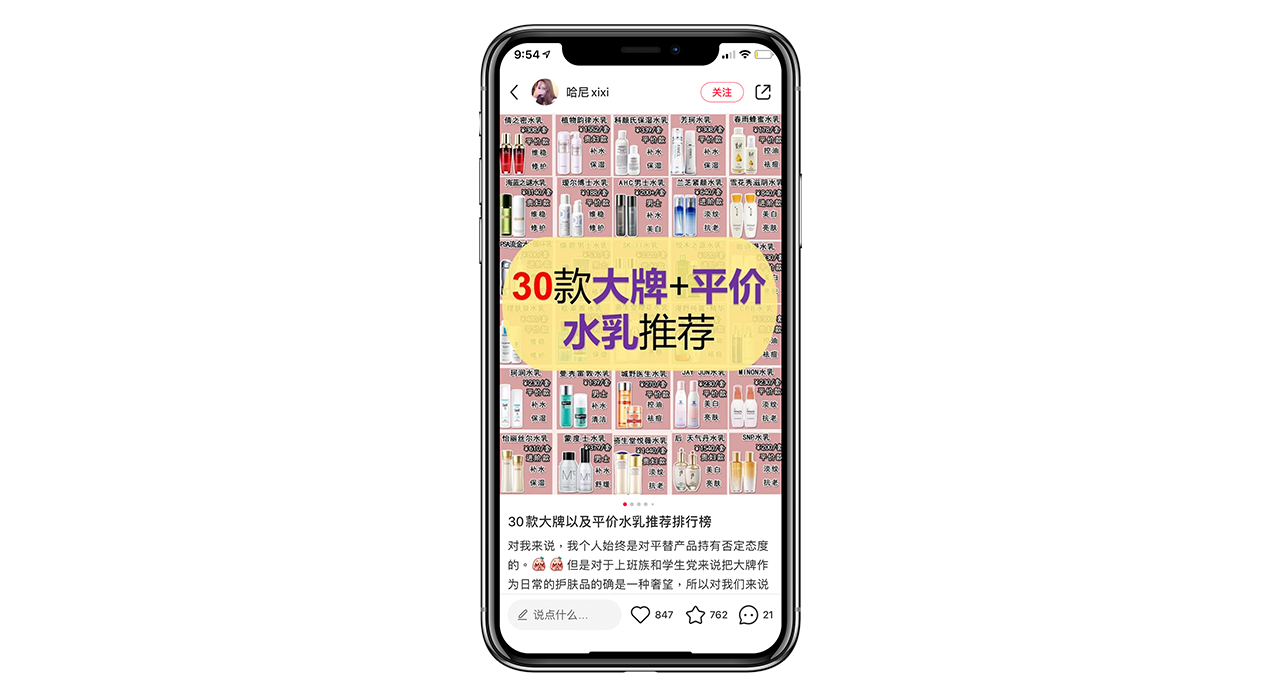[RED Series] Key Components to a Successful Chinese Influencer Campaign
In our last week’s blog post RED-XiaoHongShu Marketing 101, we introduced RED and 3 ways your brand can build a presence on the platform. In our previous post, we explained why influencer marketing should be the most important tactic on RED and it is something that you should master.
In our second blog post of our RED Chinese Social Media marketing series, we will discuss key tips for working with influencers on RED, and analyze the key components to a successful Chinese influencer campaign by using one of our client’s as a skincare brand case study.
Influencer Marketing Strategy on RED
5 Steps to Running a Successful Influencer Campaign on RED
1. Initiate a trending topic
Generate a buzz from trending topics by strategically using keywords and hashtags in the title, paragraphs and pictures in your brand content to maximize exposure on the platform.
Example of the hot topic: “You will regret if you don’t get this” or “The eye shadow palette that brings your loveliness to the next level (Tutorial here) ” #BudgetEyeShadowPalettes #EyeShadowTryOn
2. Leverage influencers of different sizes
An influencer campaign should be composed of 10 to 50 influencers within different tiers. A good combination of celebrities, micro-influencers and nano-influencers would yield the best results because you are reaching different audiences, giving you maximum coverage in the target audience you have selected.
3. Engage with followers
Launch an interactive online event to engage with the followers of the influencers; this will help to convert the buzz into actual sales.
Interactive campaign ideas: Giveaway free gifts by commenting or liking the posts or sharing product reviews. While views are great, engagement will help with brand recall.
4. Get familiar with the algorithm
RED’s algorithm is the core of its success. The platform uses recommendation algorithms to match high-quality posts to its most relevant audience. It is a key to work with “high-quality” influencers’ accounts who can generate authentic content of in-depth product reviews with catchy titles, accurate keywords and photo tags.
5. Convert reviews into sales
Influencer marketing on RED gets a high conversion rate, especially when the influencer posts include product tags on the product review posts or videos. This is because their followers can click on the tagged items and buy directly from the in-app store. RED has done a phenomenal job in leading the social commerce trend in China, making the education component of a marketing funnel integrated with the adoption and purchase components of the funnel, creating a fully-integrated shopping experience.
6 Popular Content Categories for Influencer Marketing on RED
If you recall 10 facts about RED from our last blog, Beauty is the top content generated on RED in 2019. Here, we have consolidated the top 6 styles of content on RED for Beauty brands and to share some inspiration for your next influencer campaign.
1. Product Reviews
Detailed product reviews on a single item or brand
2. Before and After
Photos or video content to showcase the before and after of using the product(s)
3. Tutorials
Step-by-step guides from zero to completion, like the following example explaining how to finish a make-up look in 3 minutes. Tutorials are also popular for other content topics such as workout videos and/or cooking videos.
4. Product Demonstrations
Influencers demonstrate the products for their followers to show their followers how to use the products. This works well for products such as medical beauty products or even kitchen appliances where showing followers how it easy it is to use can encourage trial and adoption.
5. Shopping guides
All-in-one shopping guide with detailed product information and a price comparison of featured skincare products.
6. Comparisons
Comparison of skincare products with the same benefits from different brands and then rating/ranking them to show which one performed better.
CASE STUDY
Chinese Influencer Campaign
SkinCeuticals - Vitamin C Day Campaign
Our team was tasked with promoting Vitamin C Day, a registered trademark of SkinCeuticals Canada, to drive awareness of Vitamin C serums line up and to affirm the brand’s positioning as the skincare authority in antioxidants.
Our team compiled and vetted a list of Chinese beauty/skincare Influencers across social media platforms including WeChat, Weibo, Instagram and RED. We worked with 17 influencers for the Vitamin C Day campaign during the month of April to promote the Vitamin C serum lineup from SkinCeuticals. Influencers were sent the Vitamin C serum that would be best for their skin type.
3 Key takeaways from this campaign
A Balanced Ratio of Key Influencers and Nano-Influencers
Selecting the right mix of influencers to reach the right audience is the top priority in an influencer campaign. Brands should avoid working with only top-tier influencers for a campaign. A good ratio of key influencers and nano-influencers helps to reach different followers, with nano-influencers sometimes lending more authenticity to the campaign.
SkinCeuticals - Vitamin C Day Campaign composed of 7 key influencers and 10 nano influencers.
Diverse Mix of Content Styles
For a campaign to have the most impact and brand recall, it’s recommended to roll out your influencer content within a concentrated period of time. That said, you don’t want all of the content to look the same, so one way to ensure you get a diverse mix of content styles from your influencers is to assign a specific and unique product talking point to each batch of influencers. For example, we had some of our influencers conduct experiments by dropping one drop of the Vitamin C Serum onto a sliced apple to demonstrate how it keeps the apple from turning brown; other influencers focused on the texture of the serum, while some talked about how to properly incorporate Vitamin C into your daily skincare regime. Give your influencers the creative freedom they need to generate content that looks authentic and aligns with their personal vibe (and of course their social media feed).
Assigned influencers to generate contents in different styles across different Chinese social media platforms
Call-to-Action and Keywords for the campaign
Make sure there is a Call-to-Action for your campaign because at the end of the day you want SALES! An influencer brief is an important tool for an influencer campaign, and it should contain detailed product information, key talking points, campaign objectives, influencer deliverables (on each social platform), call-to-action, and of course, appropriate brand keywords and campaign hashtags - this would ensure your influencers are on the right track when creating their content.
A detailed and clear influencer brief ensures influencers follow brand guidelines
Looking to plan a Chinese influencer campaign for your brand? Get in touch today with one of our Chinese Marketing Specialists at info@catalystagents.com. Stay tuned for the next blog post in our RED Influencer marketing blog post series; we will share a case study of a COVID-safe event activation with influencers next week!















